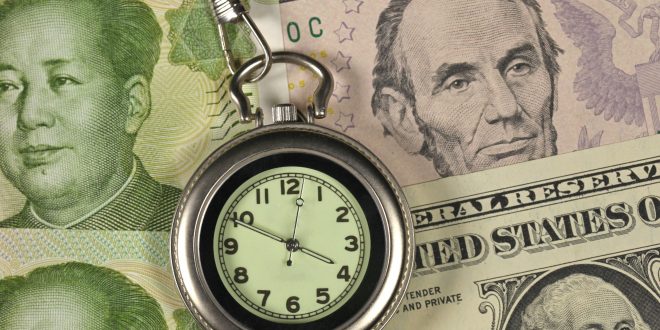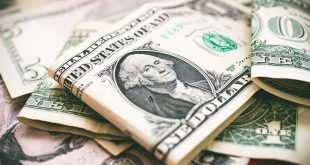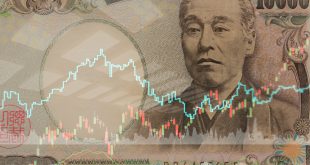Following a surprise 25 basis point (bps) rate hike in May, the Reserve Bank of Australia (RBA) board members opted to raise the Official Cash Rate (OCR) by another 25 basis points (bps) to 4.10% at its June policy meeting, delivering another hawkish surprise.
According to the most recent Reuters survey, over two-thirds of economists, or 21 of 32, expect the RBA to keep its key interest rate at 3.85% on Tuesday.
The Standard & Poor’s 500 index closed higher on Friday, but below its highest level in the session, as the rise in shares of Tesla (NASDAQ: TSLA) did not succeed in stimulating the market before the Federal Reserve (US Central Bank) meeting on monetary policy and the announcement of inflation data next week.
Tesla shares rose, on track to post their longest winning streak since January 2021.
Oil
Oil prices fell more than $1 a barrel on Friday, dropping for the second week in a row, as disappointing Chinese data added to concerns about demand growth after Saudi Arabia’s decision to cut production.
Brent crude futures fell $1.17, or 1.5 percent, at settlement to $74.79 a barrel, and US West Texas Intermediate crude fell $1.12, or 1.6 percent, to $70.17 a barrel.
The two benchmarks lost more than $3 on Thursday after a media report indicated that the United States and Iran were close to reaching a nuclear deal, which would lead to an increase in supply. The two benchmarks cut their losses after both countries denied the validity of the report.
Oil prices rose at the beginning of the week after Saudi Arabia pledged significant production cuts in addition to the cuts it had agreed upon earlier with the Organization of the Petroleum Exporting Countries (OPEC) and its allies.
But gains were reversed after rising US fuel inventories and weak data on Chinese exports.
Some analysts expect oil prices to rise if the Federal Reserve does not raise interest rates at its next meeting on June 13-14. Analysts said that the Federal Reserve’s decision may also affect Saudi Arabia’s next move.
USD
The dollar rebounded from its lowest levels in two weeks on Friday, as investors awaited inflation data and the Federal Reserve’s monetary policy decision next week for indications of the likely extent of raising interest rates in the United States.
The US central bank is expected to hold interest rates steady at the end of its June 13-14 meeting, but is likely to continue its hawkish tone and signal a possible rate hike in July if inflation remains above its 2 percent target.
The euro was last down 0.08 percent against the dollar, at $1.0774. The US currency rose 0.32 percent to 139.37 yen.
The dollar index, which measures the greenback’s performance against six major currencies, rose 0.07 percent to 103.37.
The US currency remained locked in a narrow range as investors await clearer indications of whether the economy will remain strong and inflation high or is heading for deflation.
Data on Thursday showed the number of Americans filing new applications for unemployment benefits rose to the highest level in more than a year and a half last week.
This came after the jobs report for May, which showed last Friday that companies added 339 thousand jobs during the month, which exceeded expectations, and that the unemployment rate rose, however, to the highest level in seven months at 3.7 percent.
Europe
European stocks fell on Friday, ending a lukewarm week, amid investors’ reluctance in anticipation of the Federal Reserve and European Central Bank’s interest rate meetings.
The Stoxx Europe 600 index closed down 0.2 percent, ending the week with a loss of 0.5 percent.
Investors fear that the Federal Reserve will tighten monetary policy at its scheduled meeting within days, while the European Central Bank is expected to continue to tighten monetary policy.
The European Stoxx 600 index was affected by the decline in the interest rate sensitive banking and insurance sectors, by 0.5 percent and 0.4 percent, respectively.
Gold
Gold prices fell on Monday as the dollar rose as investors awaited US inflation data and the Federal Reserve’s interest rate decision.
Spot gold fell 0.2 percent to $1,956.82 an ounce, by 0454 GMT. US gold futures also fell 0.3 percent to $1,971.10.
Markets are closed in Australia on Monday due to a public holiday.
The dollar index rose, making bullion less attractive to overseas buyers.
Investors are now awaiting US CPI and PPI data, which will be released on Tuesday and Wednesday, respectively, for their impact on interest rate expectations.
The attractiveness of non-yielding metal increases with lower interest rates.
As for other precious metals, silver fell in spot transactions 0.7 percent to $ 24.0993 an ounce, and platinum lost 0.6 percent to $ 1002.22.
Palladium fell 0.2% to $1,320.17, after hitting its lowest level since May 2019 on Friday.
 Noor Trends News, Technical Analysis, Educational Tools and Recommendations
Noor Trends News, Technical Analysis, Educational Tools and Recommendations





